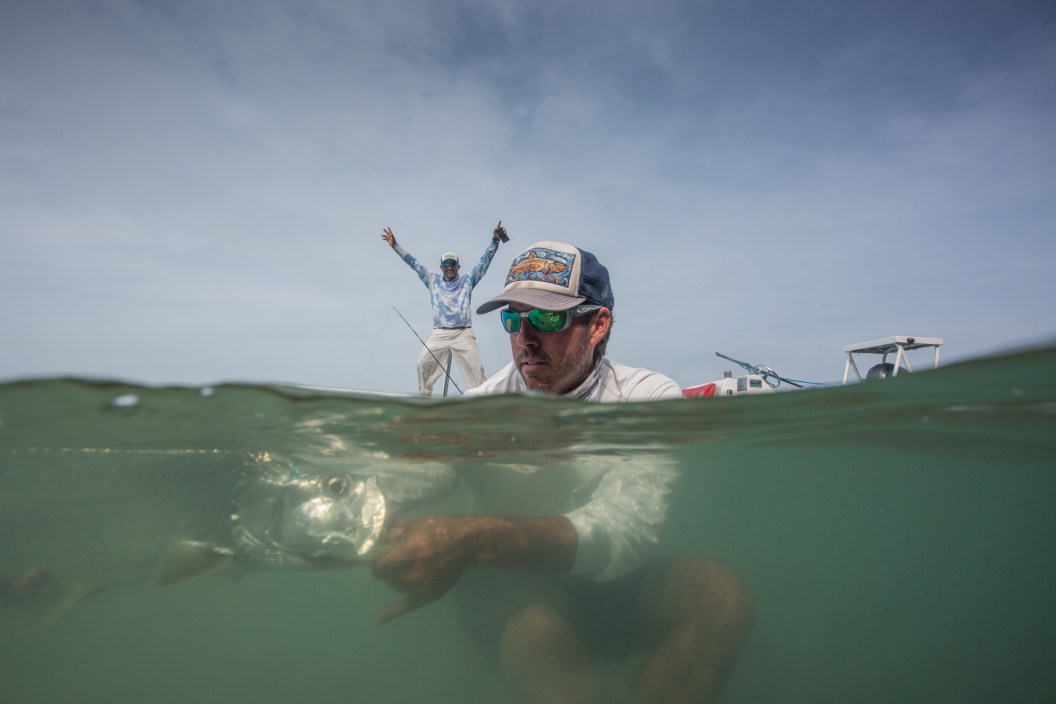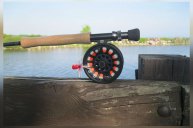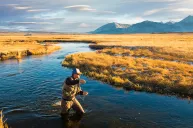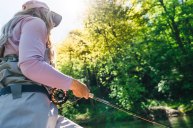You picked out your saltwater fishing destination and lodge and secured the right guide. Requested your time off from work. Ensured family matters are handled while you're off chasing a big tropical catch. And now you've just clicked "purchase" on your plane tickets. You're debating an aisle or window seat when it hits you... what exactly should you pack for your first saltwater fly-fishing trip?
I get it. The complexities of preparing to chase bonefish, tarpon, snook, or even permit can be a little overwhelming, particularly if you're more familiar with bass or trout. It's something I've seen time and time again first-hand in a 15-year career traveling around the world to photograph fly fishing and managing guide teams. Anglers show up excited, nervous, and ready to hit the water—but they've come prepared as if they were fishing back home. No matter what the kid in the fly shop back home assured you, your five-weight, cold-water trout line is not going to perform well in the Caribbean, and that lightweight little bass reel with 40 feet of backing is not going to do the job when there's a bonefish making a long run on the end of your line.
Any lodge, guide, or outfitter worth their salt will give you a solid packing list and answer any questions about gear before your trip. Still, take a look at this overview of gear you should consider before your first saltwater fly-fishing trip in the tropics. As many American anglers choose to take their first saltwater trip in the Caribbean, it addresses gear you'd potentially need for a trip to that region.
Saltwater Fly Rods
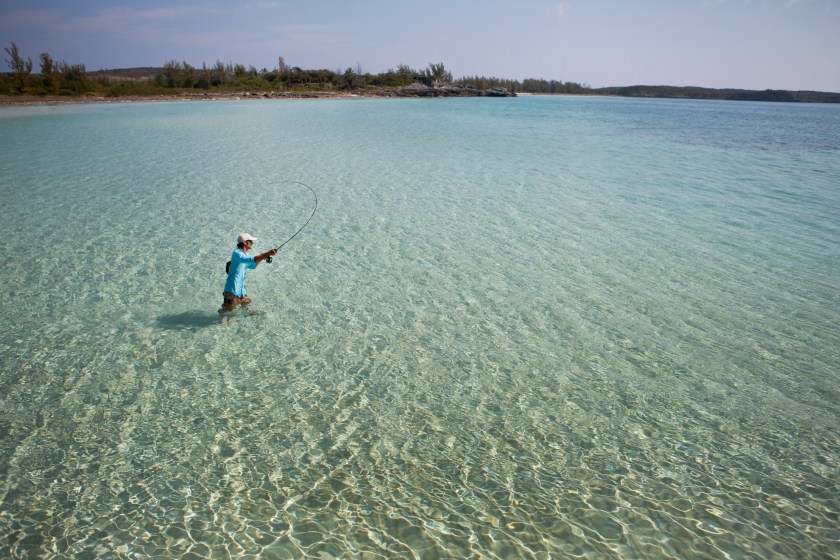
Getty Images, Jmichl
Most commonly anglers fly fishing in the Caribbean will run three rods: an 8-, 9, and a 10-weight. The 8-weight is typically rigged for bonefish, 9-weight for permit, and 10-weight for tarpon. If it's your first time in the salt you'll likely be using the 8- and 9-weight most often, as bonefish are a great species to learn the saltwater game on and to practice a strip set with. If you're keen on tarpon, keep that 10-weight rigged, and even consider bringing along an 11- or 12-weight as well.
Reels and Lines
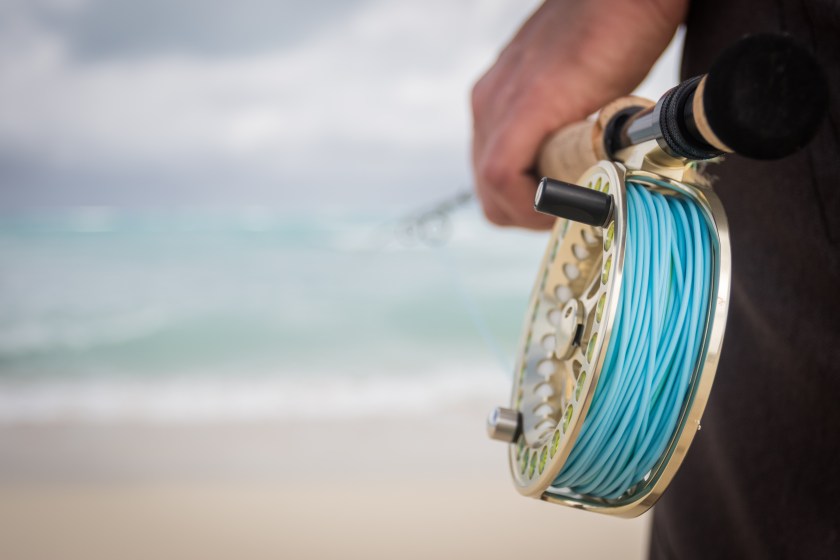
Getty Images, Lamont
Saltwater reels are a different beast from their small, lighter freshwater cousins. And it's no small wonder—saltwater fish are different beasts, too. Reels made for saltwater usage are anodized and fully sealed, ensuring salt and sand can't get into the inner workings of their gears. They also often have hefty drag systems to help slow larger fish. Besides your fly line, you should be able to fit at least 200 yards of 20-pound backing for your bonefish and permit reels, and 250+ yards of 30- to 50-pound backing on your tarpon reel.
In terms of lines, weight-forward floating lines are most common. Ensure you purchase lines made for tropical water; cold-water lines are not crafted to perform in hot, sticky, salty conditions and will grow limp and "tacky," making them very hard to cast. Tarpon anglers may find it worthwhile to invest in a spare spool loaded with an intermediate line for their 10+ weight rods in case they find themselves casting into a channel or deeper water.
Always give your reels a good rinse of freshwater after each day of fishing to help wash off the salt and prevent corrosion. When you get home from each trip, it's a good idea to thoroughly clean your reel and line, and lubricate your reels, if needed.
Leaders and Tippet
Choosing terminal tackle is often where it gets most confusing for anglers, so don't be shy about asking your saltwater fishing friends or the destination itself for help. As a rule of thumb, bonefish leaders are 9 to 12 feet long, and end in 10 or 12-pound filament. Permit leaders are 9 to 14 feet long, ending in 16 to 20 (this is finer than the bonefish leader; just like in flies, larger numbers represent smaller diameter).
Many anglers like to pack complicated shock, tiered, or custom-built tarpon leaders. Again, talk with your guide about your specific fishery, but I prefer to run a straight piece of 60- or 80-pound fluorocarbon or even mono tippet. One straight piece means there are fewer knots to potentially fail, and most tarpon eats are aggressive enough that not having a tapered leader is not a problem.
Bring along spools of 12-, 16-, and 20-pound tippet so you can add length onto your bonefish and permit leaders as needed. I also like to bring a few wire predator leaders in case fishing is slow and we want to go hunt up a few barracuda.
Flies and Fly Boxes
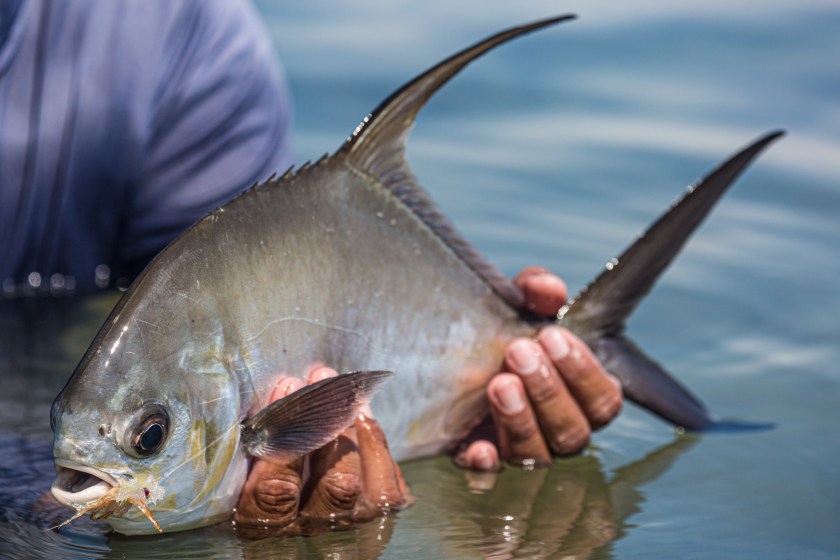
Jess McGlothlin
Like in freshwater fishing, the saltwater flies you'll use will largely depend on the fishery and what species you're targeting. Saltwater patterns typically fall into three categories: crabs, shrimp, and baitfish imitations. Talk with your lodge or guide to see what patterns they recommend for your destination. (My personal favorites I always keep in the box, regardless of where I'm fishing: a chartreuse-and-white Clouser minnow, a Gotcha shrimp, and a raghead crab.)
Many serious saltwater anglers prefer to run a separate fly box for each type of fly, allowing maximum organization on the boat. If you're wading or prefer to pack fewer boxes, be sure to segment your flies accordingly within the box to keep them organized. This will allow you to quickly assess and change flies while fishing. Look for fly boxes that keep flies secure in the foam—important for both jostling travel and windy days on the water—and that will keep flies dry if the box is dropped in the water.
Once flies have been in the saltwater, put them into a plastic baggie or keep them separate from the rest of your flies until you can rinse or soak them in freshwater and dry them. Putting a wet, salty fly back into your box is a fast way to rust out your entire fly box.
Pliers
Saltwater fish are big and can be toothy. Bring along a sturdy pair of fishing pliers to help remove hooks, snug knots, and cut tippet. Many come with a belt-mounted holster pouch for easy access. Just like your other gear, make sure you rinse your pliers in freshwater after every fishing trip and dry them thoroughly before storage.
Sunglasses
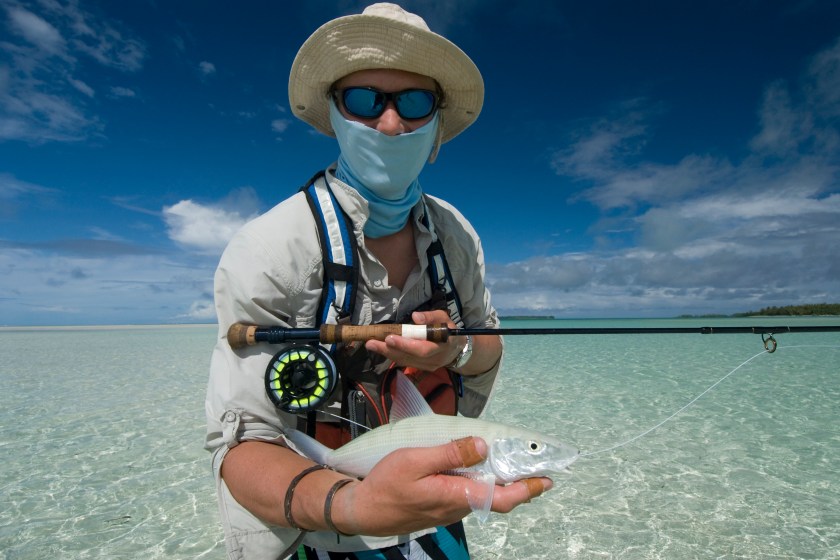
Getty Images, Rainervonbrandeis
The right eyewear is as essential as any of your fishing gear. Sunglasses protect your eyes from wayward flies as well as from the sun and are a good idea any time you're on the water. Look for wrap-around styles that will help guard your eyes from reflective glare and provide a good line of sight. I prefer polarized green lenses for inshore fishing and polarized blue lenses for offshore fishing—both colors can really help fish pop, which is key when you're sight fishing and need to spot a moving target.
Always keep a spare pair of sunglasses with you, too. Accidents happen, and whether it's a broken lens or a pair dropped overboard, it's good to have a backup pair ready.
Wading Boots
In many Caribbean fisheries you'll be fishing mostly from a boat, but in case you have the chance to hop out and wade a flat, it's a good idea to have a pair of wading boots on hand. Look for boots that offer ankle support, drain quickly, and are durable enough to hold up against limestone-bottomed flats, mounds of coral, or other unexpected objects. Some anglers like to layer neoprene socks underneath their boots, while others simply wear athletic socks.
I'll often wear flip-flops down the dock and kick them off once I'm in the boat. Fishing from a skiff or panga barefoot is a good idea as you can feel if you step on your fly line. Plus, many warm-weather boat operators insist on a shoes-off rule aboard their rigs. If you have tender feet or simply prefer to have something on them, consider bringing along a pair of lightweight, light-colored socks. You'll get sun protection (the tops of feet burn quickly!), have protection from a hot deck, and pad the soles of your feet.
Clothing
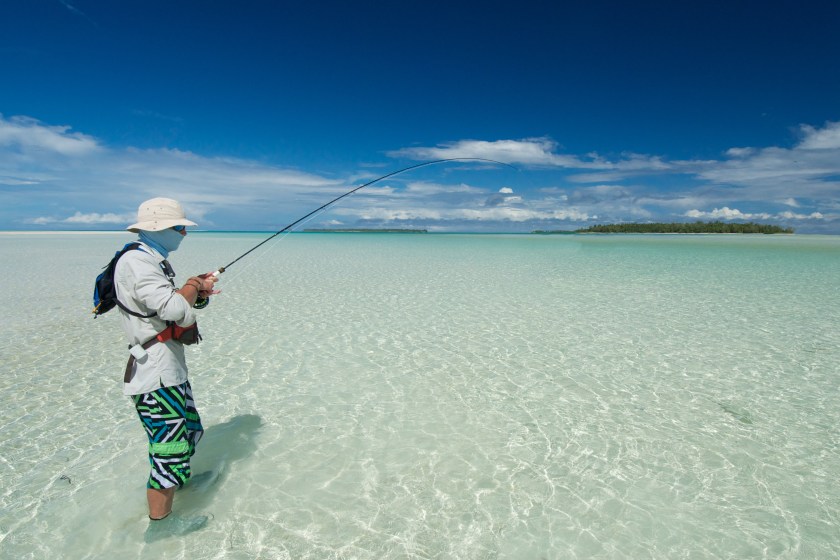
Getty Images, Rainervonbrandeis
Just as with street clothing, fishing clothing is largely left to personal preference. Wear what makes you comfortable but keep this in mind for Caribbean fishing: Sun protection is king. There's a reason you see most saltwater anglers in long-sleeved, hooded fishing shirts and long pants. On the flats, the sun is brutal, and shade is hard to come by. Sunscreen is great but sweats or washes off more quickly than you'd expect, and physically protecting your skin from the sun is a good move.
Plan to bring along: Sun shirts (again, long sleeves and a hood are a good idea); a hat (ballcap or a broad-brimmed sun hat); and quick-drying bottoms. If I'm wading or in the water a lot with the camera, I prefer shorts, but I'm very careful to sunscreen often and always bring along a towel to cover up bare legs if the sun gets to be too much. There are a myriad of quick-dry long pants that will help protect you from the sun and keep you cool while doing so.
It's a good idea to also bring along a gaiter to pull up along your neck and ears. And always bring a rain jacket, even if the morning looks cloudless. Storms can and do pop up quickly on the flats, and while it's often a warm rain, you'll be happier if at least your head and torso are dry. If it's forecasted to be a stormy, wet day, bring along a pair of rain pants or bibs as well.
Miscellaneous Essentials
Everyone has their own set of "personal items" they bring along for a day on the flats. I always pack my gear (cameras included!) in a waterproof pack so when the inevitable rain comes I don't have to worry about tucking items away out of the wet. This Highwater Backpack from BOTE has been an awesome recent find. Whether you prefer a boat bag, a backpack, or a sling pack, ensure you at least have a waterproof dry bag along to shove everything into when things get a little damp.
Even if the guide is bringing water bottles, I like to bring one pre-mixed with electrolytes so I can sip that throughout the day (LMNT is my favorite—clean-tasting and easy to travel with), alternated with plain water. It's ridiculously easy to get too focused on the fishing and get dehydrated, which helps neither your fishing nor your evening relaxing at the lodge bar. If you're not into flavored drinks, bring along a few packets of electrolyte gummies and stick them in the boat cooler. Cold gummies on a sweltering day are amazing.
Above all, listen to what your guide and the fishing manager have to say and be open to trying new methods of fishing. Your first trip in the saltwater is a momentous occasion, and you're going to enjoy it all the more if you relax, trust in the gear you've planned and prepared, and soak in every bit of the experience. You're entering a whole new world of fly fishing—prepare to become addicted.
READ MORE: Great Saltwater Fishing Destinations
